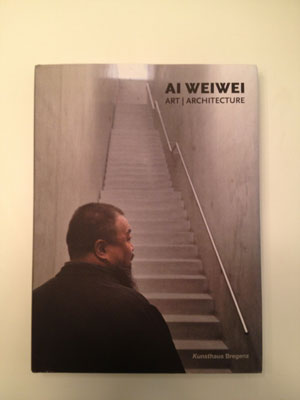
In the last several years, Ai has become a larger-than-life figure for his role as an activist, celebrity, political critic, victim, and all-around Chinese Communist Party irritant. The exhibition and the essays that accompany it rightfully acknowledge Ai’s role in the social discourse of China, but focus a critical lens on the artist’s work. This body of projects ranges from his early collaboration with Herzog & de Meuron on the Beijing Olympic Stadium to the Jindong New Development Area (an urban planning project that includes a series of pavilions designed by different architects), to a home that Ai designed in upstate New York with the Swiss firm HHF.
In the essays, Ai comes across as China’s sharpest architecture critic, albeit a bit grumpy. “I don’t like Beijing,” he is quoted as saying. “It is not fit for human inhabitation.” Adding later, “I feel hopeless about architecture in China.” All of this blunt commentary culminates in Ai’s argument for a kind of “ordinary” architecture, one that would have a greater impact on China’s rapidly growing urban landscape than the architectural spectacles favored by developers and corporations. In fact, this argument is the most powerful idea in Ai’s collective work, and shows that his moral compass is aimed in the right direction.
What’s missing from this catalog and the exhibition is an extended dialogue between Ai’s architectural work and the art for which he is most well known (and which I think best displays his brilliance). Some of the projects featured, such as the Caochangdi group of buildings in Beijing and the Tsai residence in upstate New York, are in truth, fairly simple structures. (Ai is even quoted as saying that after the concept phase, he rarely visits the construction site and likes having the construction workers figure out the details of his design.) However, the projects lack a larger significance when they are viewed absent Ai’s trajectory as an artist.
In an essay, Reto Geiser, the Swiss architect and theorist, attempts to address this in more depth, but doesn’t provide enough physical evidence. Ai’s art has deep roots in Chinese history—regardless of whether it is critical or reverent—and Ai’s evolution derives from the artist’s belief that his own work is constantly reacting to China’s societal formation. His body of work in architecture is impressive, but readers would have a better sense of it if they saw how it fits into his grander vision of art—and of China.
Andrew Yang is a writer who covered architecture while based in Shanghai from 2007 to 2010.




Post a comment to this article
Report Abusive Comment